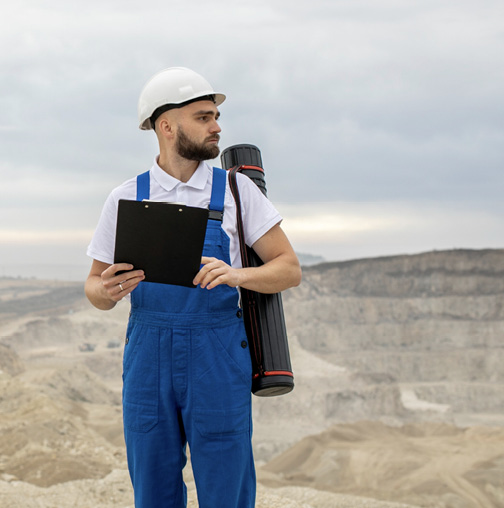Most don’t give much thought to PPE – it’s just another part of the job. It does evolve, however, and there are trends in the demand for improvements in the mining industry that are unique and which must be met.
by Nick Warrick
Last year, there were 40 fatalities in the mining sector, a far cry from over 1,000 per year in the early 20th century. While mining is safer than ever today, it’s still classed as one of the most hazardous industries in the United States. These reduced figures are partly due to advances in protective workwear. Further progress hinges on the adoption of innovative gear that addresses the unique set of hazards facing miners.
Let’s take a look.

Critical role to play
Protective workwear is vital in mining. First and foremost, wearable gear saves lives and reduces the risk of injury. Investing in good quality protective workwear demonstrates a commitment to employee safety. That, in turn, boosts employee morale and the company’s reputation.
On a business level, protective workwear drives productivity because workers can more fully focus on their tasks. Finally, protective workwear ensures your business meets strict Mine Safety and Health Administration (MSHA) safety regulations. Failure to do so can lead to fines, penalties, and legal liabilities. In the worst cases, non-compliance can result in a catastrophic loss of licence. While there are many options available, American-made brands tend to be reliable in terms of compliance.
Unique challenges for mining
Mining brings together a singular set of risks, operating in confined spaces and deal with extreme heat, humidity, dust, hazardous chemicals, noise, and the threat of falling debris, explosions, and fire. Surviving these hostile environments requires durable workwear that provides adequate protection without restricting a full range of motion, vision or hearing.
Transforming workwear
Technology is transforming the mining industry across the board, and protective workwear is a big part of that push. Providing safe, comfortable and functional workwear for miners ensures businesses are part of this ongoing sea change.
Some of the more interesting PPE that has emerged for the mining sector in recent years include:
- Smart PPE. Helmets, vests, belts, and other wearables come with sensors that detect hazardous gases and monitor vital signs. Additionally, other Smart PPE provide feedback to supervisors, such as location data, which assists proactive responses to various hazards.
- Exoskeletons. Exoskeletons can provide crucial physical support during demanding tasks, reducing fatigue for sustained physical exertion.
- Enhanced visibility clothing. Visibility is paramount in enclosed spaces with limited light. Garments made from reflective materials or fitted with LED lights keep workers notable and reduce the risk of accidents.
- Temperature-regulating clothes. As any miner knows, surface and subterranean temperatures can vary dramatically. Thermo-adaptive materials can tackle heat stress and hypothermia and allow comfortable work in extreme conditions.
- Communication devices. There has also been a huge growth in wearable communication devices. For example, clothes and helmets with integrated hands-free kits allow for seamless communication and a full range of movement, even in the most challenging environments.
- Advanced fabrics. Cut and puncture-resistant fabrics are some of the most impactful advances in mining PPE. High-performance fabrics like Kevlar provide unparalleled strength for gloves and protective layers. Additionally, high-tenacity polyethylene like Dyneema offers a blend of durability and flexibility, making them perfect for aprons and sleeves.
- Smart boots. Boots have advanced considerably in recent times in terms of impact protection, comfort, and slip resistance. However, this new generation of footwear also comes with sensors for environmental monitoring, fatigue detection, and GPS tracking, all of which contribute toward safer experiences for workers.
Future trends and developments
While today’s gear is more than capable of making a difference, there are exciting developments on the horizon that will shape the future of mining safety. Let’s peer into the future to see what we have to look forward to.
Mining-specific IoT
While the Internet of Things is used across a variety of industries, the future could see a dedicated mining device integration. Connections between suits and helmets could provide pinpoint monitoring of health metrics, environmental data, and hazards.
Moreover, mines’ sensors would provide a holistic overview of conditions, feeding predictive algorithms that could boost safety and early warning systems.
Robotics and nanotechnology
Expect further advances in material technologies to include more durable and lightweight materials made from nanotechnology. These innovations would advance existing technologies, such as repairable clothing. What’s more, we should see widespread availability of dynamic materials that can respond to different temperatures.
Advanced eyewear
Eyewear fitted with augmented reality (AR) is already here. However, in the future, this equipment will contain heads-up displays that provide miners with real-time information about the environment.
These likely AI-driven devices could provide obvious safety benefits through advanced warnings and even provide maps to help navigate difficult terrain. Finally, for environments with moving machinery or hazards, advanced eyewear with proximity sensory data could keep workers safe from harm.
The ongoing evolution
After a tough few decades in the sector, the future of mining looks healthy. The Center for Strategic and International Studies (CSIS) suggests that the U.S. needs to build more mines if it is to compete with “China’s dominance in critical minerals;” however, ensuring that future requires new thinking and the adoption of innovative technologies.
Protective workwear for miners must evolve alongside machine technology and facilitate safer environments, protect from harsh elements and chemicals, and improve your company’s reputation and accident record, leading to better employee acquisition and retention.
About the author: Nick Warrick of All Seasons Uniforms, with over 15 years of experience in the work uniform business, has worked with over 100 clients across 20 different industries.
